Ceramic floor tiles
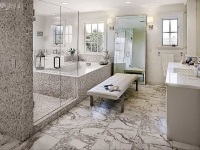
One of the oldest materials for construction and decoration is stone. Nature has rewarded it with remarkable strength and excellent appearance.
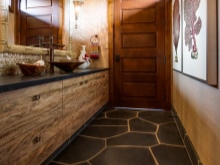

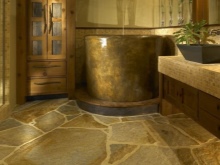
In modern times, natural stone is quite expensive, but there are many artificial analogs, the first among which is a tile that imitates the stone texture. Most often such a tile is used as a floor tile, as this option has many advantages.
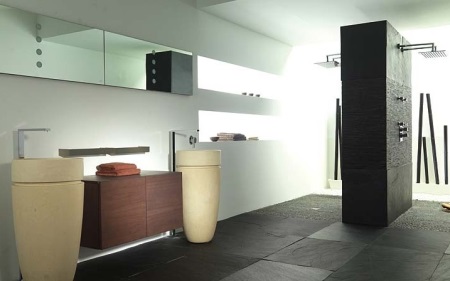
Advantages
Floor tiles, imitating stone - a great solution for the interior of the bathroom. The variety of colors, textures and sizes allows you to fit it into any interior - from antique to classical, from minimalist to high-tech. Tile "under the stone" is very popular, because it easily fits into any concept of repair, looks natural and original, does not get bored with time.
In any case, such a decor indicates good taste of the owner, as well as practical and durable finishing material, which long retains its aesthetic properties. Long life - one of the main advantages of floor tiles "under the stone". Such a coating will look expensive and luxurious even after several years of active use.
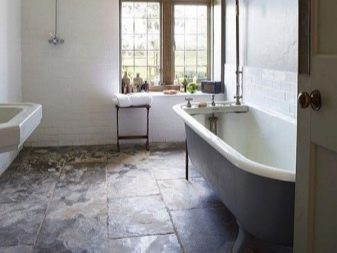
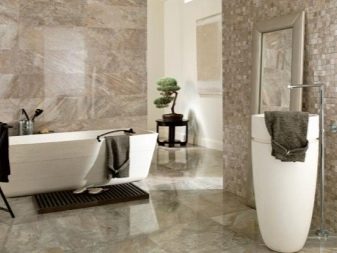
Unlike capricious natural stones - marble, slate, granite and others, tiles imitating them are loyal to moisture, falling objects and resistant to abrasion. Putting on the bathroom floor tiles "under the stone", you can not worry about the fact that it will be difficult to keep the room clean.
Firstly, the process of cleaning will be fast and easy, and secondly, the texture of the stone itself hides minor dirt, making them not so noticeable. This is especially true in the bathroom, when water droplets dry on surfaces and leave ugly marks.
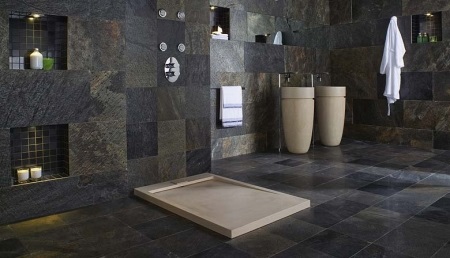
Types
Tiles with a stone texture effect come in different types.
Consider the most popular:
Porcelain stoneware .
The main advantage is almost zero moisture absorption, which is the best option for the bathroom. The tiles will not absorb water, even if you spill a large amount of it, accordingly, the leak can be quickly repaired without consequences for both the flooring and the neighbors downstairs. Thanks to the technology of semi-dry pressing, porcelain stoneware exactly repeats the structure and texture of wild stone and looks very beautiful. In addition, this material does not crack and does not splinter from accidental impacts on its surface does not form stains from moisture, and the range of colors of porcelain tiles is huge!
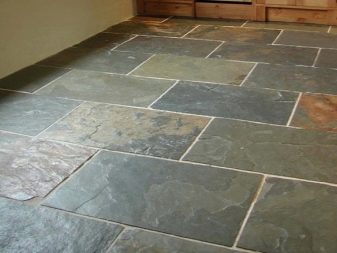
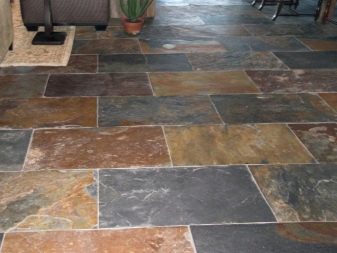
Ceramic Tile
This material is also created by pressing, then the glaze is put on top and the tile is baked in a furnace. Tile has almost all the advantages listed above: a wide range of colors, moisture resistance, hygiene and durability. Among the disadvantages - ceramic tiles over time "burn out", easily broken and can be very slippery, especially when wet. It is believed that such tiles are more suitable for tiling the walls than the floor.
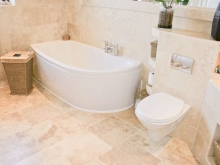
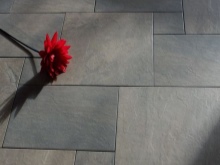
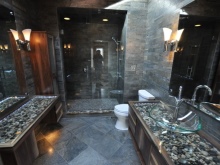
PVC tiles
You can say that this is similar to linoleum, which is not in a roll, and individual tiles. Each consists of several layers: a base, a layer with a pattern, a layer of PVC and a protective coating. The advantages of such tiles - the ease of installation, which does not require skills, moisture resistance, a pleasant warm coating without seams, PVC-tile does not slip and is inexpensive. Minus - short-lived, unstable to chemistry and unecological, as it is a synthetic material.

How to take care of?
To ensure that the floor tiles "under the stone" as long as possible kept a beautiful appearance, you need very little. It's enough to regularly wipe the surface with a damp cloth or sponge, and In the case of heavy contamination, use a cleaner that does not contain fats or organic acids.
Another method that tiles cannot tolerate is mechanical impact. Do not use mechanical brushes and products with abrasive particles in cleaning.
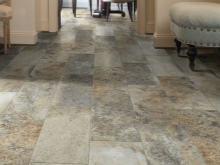
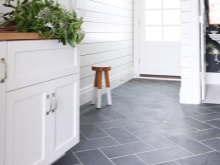
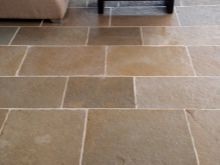
Laying
Laying the floor "under the stone" is a painstaking process that requires care. The greatest difficulty is the laying of "marble" tiles with a glossy surface - here even the slightest mismatch of shades and edges of adjacent tiles is unacceptable.
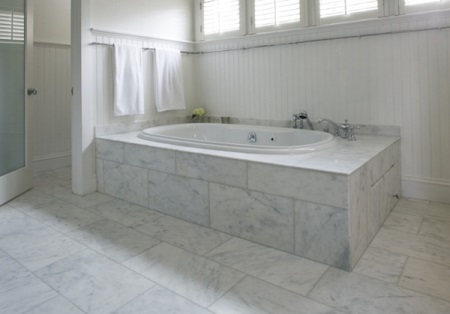
The process of laying looks as follows: you need to level and clean the floor, apply primer and proceed to tiling. Before the work is necessary to make the layout - this is an important point, on which the final result depends. It is also necessary in advance to cut tiles that do not fit entirely. Whole tiles should be placed in the center of the room, as well as in corners and open spaces, "scraps" is better to remove in inconspicuous corners or where there will be plumbing or furniture.
Next, the process is no different from laying any other tile - using a toothed trowel, the adhesive is applied and the tiles are laid one after another. When the glue is fully cured, you can grout the joints, if the layout involves them.
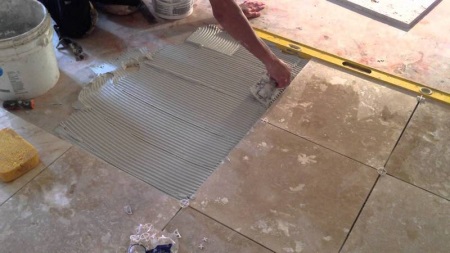
Examples in bathroom design
A very beautiful floor tile "marble", which is also repeated on one of the walls of the bathroom. Due to the different textures and shades, repeating natural stone, we get the impression that this is a natural material, only slightly processed by human hands.
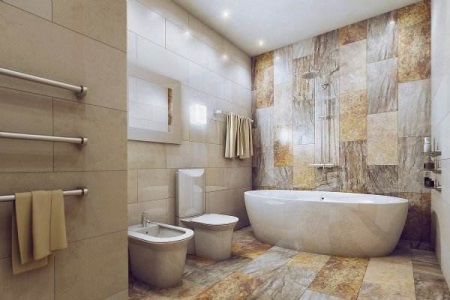
Very bright and comfortable, yet elegant and stylish bathroom, the floor of which is decorated with natural stone tiles. Each tile has its own shade and its own pattern, which altogether creates the full feeling that it is cut from a natural material.
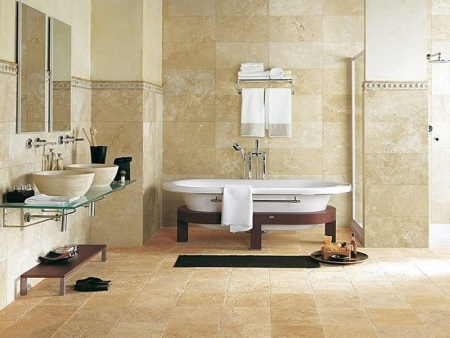
A luxurious bathroom, the floor and walls of which are covered with chocolate tiles imitating granite. Warm color and pleasant, slightly rough texture of the tiles will allow you to relax and truly feel the unity with nature!





